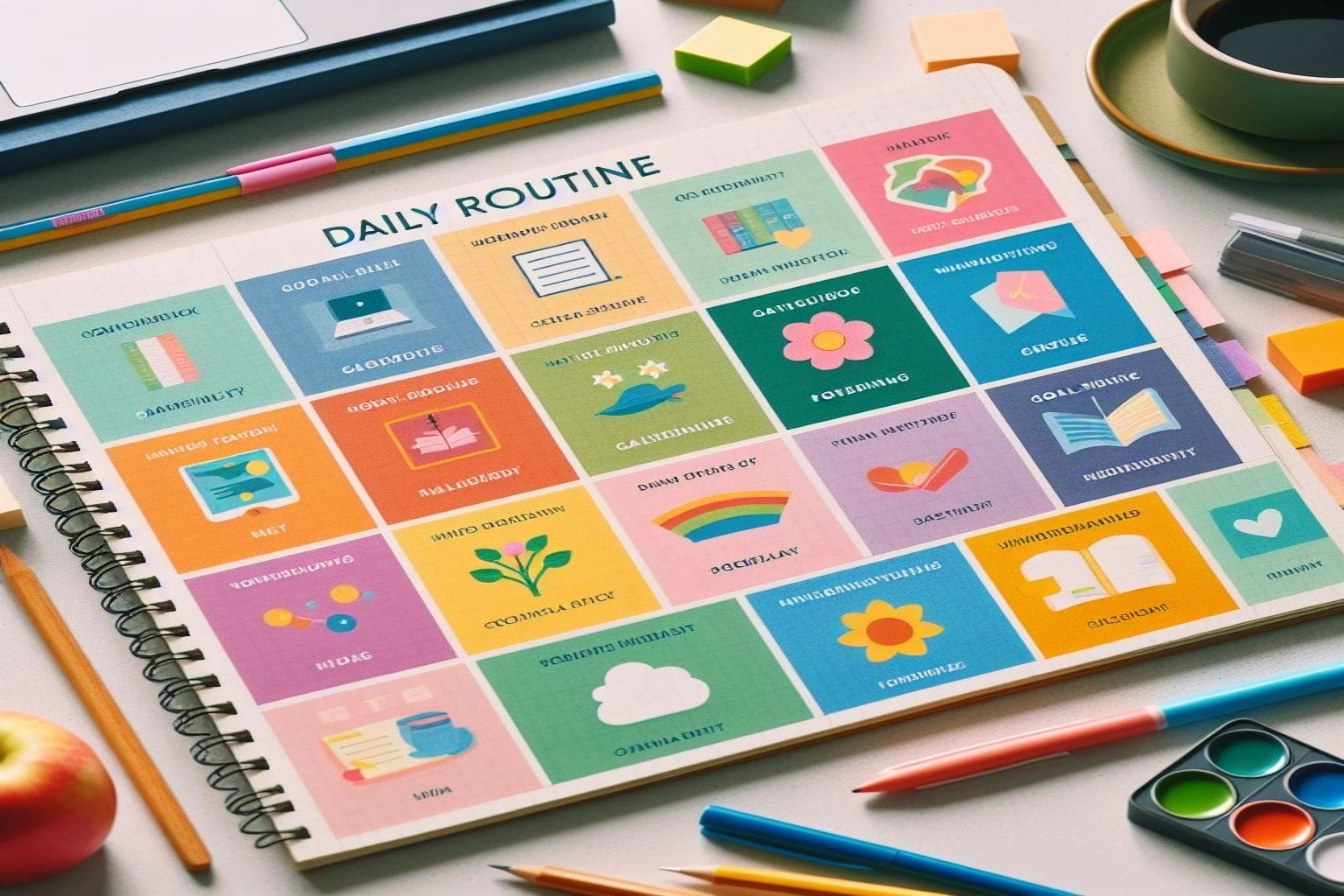
Communication between men and women has been frequently compared to cross-cultural communication. Men and women often feel like they speak different languages. Some of this stems from biological differences, while some is the result of social conditioning and cultural norms. Regardless of origin, recognizing where these communication differences lie is the first vital step to bridging the gender gap.
In this in-depth blog post, we’ll explore the 7 key differences between how most men and women communicate. We’ll look at real-life relationship scenarios that reveal these gaps and simple solutions to avoid misunderstandings. Mastering male-female communication styles leads to better understanding, connection, and compatibility in romantic relationships, friendships, and the workplace.
7 Key Differences Between Male and Female Communication Styles
While men and women ultimately want similar things out of relationships – love, companionship, acceptance – how we communicate those needs can differ drastically between the genders. Here are 7 impactful differences between male and female communication styles to be aware of:
1. Men Focus on Problem Solving, Women Focus on Emotional Connection
One of the biggest differences between men and women is what we focus on when communicating with others. Men have a tendency to listen to problems and immediately jump into problem-solving mode. When a woman shares a problem, the man’s instinct is to offer solutions and fixes.
Women, on the other hand, are often seeking emotional support and empathy when sharing problems or challenging experiences. Women talk about difficulties to connect, not to get directives. They want someone to listen, empathize and say “Oh that sounds so hard!” before advice is given.
This difference causes friction when he dives into solutions before she feels heard and understood. She perceives his quick fix-it response as him not caring. He feels frustrated that his sound advice isn’t appreciated.
Solution: When listening to a woman express her feelings, especially during challenging times, consciously override your instincts to immediately solve her problem. Set your Mr. Fix-It hat aside first. Lead with empathy and emotional connection before pragmatism.
Say things like:
- “Tell me more about how that made you feel”
- “That sounds really frustrating, I can understand why you feel upset”
- “How did you handle that difficult conversation with your boss?”
Starting with emotional validation builds connection. After she feels heard, then you can ask if she would like any advice or solutions. Your fix-it hat is on standby until requested!
2. Women Need More Emotional Support and Processing Time
Women generally like to take more time to process situations and emotions by talking them through out loud. Even just venting about a bad day can help women relieve stress and frustration. Men are more likely to retreat inward to think over problems.
Related to the point above, feeling emotionally supported comes from the other person listening without judgement, asking thoughtful questions and validating difficult experiences. Women need to feel heard and understood in order to build intimacy in the relationship.
Men can fulfill this need by proactively asking questions to draw her out more, reflecting back what she is saying and empathizing with her perspective. Resist the urge to interrupt or hurry the conversation along.
Solution: When she is sharing her feelings, ask open-ended questions like:
- “How did that make you feel when your coworker said that?”
- “What were you thinking when you had that tough conversation with your mom?”
- “What was going through your mind when you got the bad news?”
Paraphrase back key points so she knows you’re actively listening. Make sympathetic comments like “I can understand why you felt sad about that.” This emotional engagement shows your support.
3. Men Withdraw to Their “Cave”, Women Have “Waves” of Emotion
The common stereotype of men retreating to their “man cave” contains truth at the core. Men often withdraw inward when facing problems or difficult emotions. They disappear into their cave to silently process things on their own, then reemerge ready to move forward.
In contrast, women tend to be more outwardly expressive with their emotions. Women often need to vent or “talk it out” in order to cope with challenges big and small. The common metaphor compares this to waves – up and down, up and down in response to external or internal stimuli.
This key difference is the root of problems when he pulls away or gets quiet and she feels shut out. Instead of realizing he is pondering something internally, she assumes his distance means he’s pulling away from her specifically. Or that she did something wrong. Not feeling his engagement triggers her anxiety.
Solution: The best way to avoid misunderstandings when he retreats into his man cave is simply communication – awkward as it may feel in the moment.
Explain that you need some time alone to recharge and process, but that you will come back soon. Reassure her that you aren’t withdrawing from her, but turning inward for a short time. She can then relax and be less anxious knowing you just need some solitude and will return open to connect again afterward.
4. Men and Women Have Different “Love Languages”
The concept of love languages elegantly explains some of the confusion between the sexes regarding how we show love and want to receive it. Men often express love through action – doing helpful things and solving problems. Women more often express love through quality time, words of affirmation, gifts and physical touch.
A man may diligently take care of household repairs, car maintenance, yardwork and other tasks in an effort to show his love. But if quality time is her primary love language, no amount of acts of service will have the same emotional impact as him being fully present and attentive. Love languages can differ even between two women or two men, but broadly fall along gender norms.
Solution: Learn each other’s love languages and make concerted efforts to “speak” it. He should schedule regular date nights and undivided attention to speak her language. She can express gratitude for his helpful gestures since acts of service speak to him. It’s also important to express love in the way the other person most likes to receive it, not just in your own natural language.
5. Men Want Respect, Women Want Caring
On the most basic level, men have a primary need to feel respected, trusted and appreciated. Women have a core need to feel cared for, understood and cherished. Men feel loved when they are admired. Women feel most loved when they are adored.
Criticism, challenges to his competence and nagging eat away at a man’s sense of respect in the relationship. When respect erodes, he feels the foundation crumbling. For women, feeling neglected, ignored or like an afterthought creates a hollow pit of unimportance. Regular, thoughtful attention keeps her love tank full.
Solution: Make sincere efforts to express appreciation for his efforts, abilities and strengths. Avoid criticism and contempt. Refrain from trying to change him. Thoughtful little gestures to make her feel special prevent women from feeling neglected – a little love note, bringing home a treat “just because”, putting effort into a date night. These make her feel cherished.
6. Men Are Efficient Communicators, Women Add Details
Research shows the average man speaks about 6,000 words per day while the average woman speaks around 9,000. Men generally use fewer words and aim to communicate necessary information efficiently. Women tend to include more descriptive details and rapport talk to connect emotionally.
This difference causes common clashes – he feels impatient to move the conversation along, she feels cut off before fully expressing herself. Alternatively, he may tune out her intricate stories while she wishes he would engage more.
Solution: Women can be more conscious about getting to the point efficiently when his patience is low. Men can avoid interrupting and allow her space to fully tell her stories, asking questions to show care and interest. When you need efficiency, gently guide her to be more concise. When she needs rapport, indulge the details. Meet in the middle.
7. Men Give Love by Doing, Women by Talking
As mentioned earlier with love languages, men express love by doing acts of service while women express love more verbally through compliments, affection and quality conversation. This difference leads to the all-too-common scenario of her pleading for loving words while he feels his actions should say it all.
She laments “Why don’t you ever tell me you love me?” while he replies “But I do so much for you!” Each gender gives love in the way we most like to receive it.
Solution: Make a conscious effort to express affection and appreciation verbally, even if it doesn’t come naturally. Do little things just because – flowers, her favorite treat, an “I love you” text. She can return the favor with sincere gratitude for all he does. Meet in the middle.
Now that we’ve explored 7 key differences in communication styles between men and women, let’s look at some common relationship scenarios that reveal these gaps and simple solutions to avoid unnecessary conflict.
7 Common Male-Female Communication Problems and Solutions
Many day-to-day interactions between men and women fall into predictable patterns that lead to unnecessary friction and frustration on both sides. Becoming aware of these pitfalls is half the battle. Here are 7 prime examples of communication mishaps between the genders and how to handle them better:
1. The “Listening” Dilemma
Situation: She comes home from work feeling stressed and overwhelmed. She vents about her day and difficult coworkers. In response, he immediately starts troubleshooting and offering solutions to solve her problems at work.
Issues: She feels invalidated and unheard because he jumped right into fix-it mode instead of letting her vent her feelings first. He thinks he’s being helpful but she perceives his solutions as him not caring about her frustration.
Solution: Set your problem-solving instincts aside first. Lead with emotional validation like “That sounds really frustrating. Tell me more about it – what happened with that difficult client?” Let her fully vent, get validation, then ask if she wants any advice before moving into solution mode.
2. The “Space” Dilemma
Situation: After an argument, she says she needs some time alone to cool off and collect her thoughts before continuing an emotionally intense conversation. He keeps engaging, demanding they resolve this now.
Issue: When emotions run high, women often need time and space alone to settle down before re-engaging. But demanding she talk it out immediately only escalates the situation.
Solution: Respect her requested space. Say calmly “I understand you need some time. Let’s revisit this in a couple hours when we’ve both had a chance to calm down. I want us to work this out.” Give her space!
3. The “Cave vs. Wave” Dilemma
Situation: He had a stressful day and needs solo time to unwind in his “man cave.” But when he retreats, she feels rejected and keeps trying to connect.
Issue: Men withdraw inward to process emotions while women need to talk out feelings. So when he pulls away, her wave of need for emotional connection and talking collides.
Solution: Explain that you need some time alone to decompress and will come back open to connect afterwards. Reassure her that you’re just “going into your cave” for a bit – not rejecting her.
4. The “Love Language” Dilemma
Situation: He does various acts of service – repairs, yardwork, errands, etc, believing these actions show his love. But she craves quality conversation and undivided attention. No matter how helpful he tries to be, she feels unloved.
Issue: His “love language” is acts of service while hers is quality time. So his efforts to express love miss the mark. She then seems unappreciative which baffles him.
Solution: After doing chores and favors say “Now that I’m done with the yardwork, I’m all yours for the rest of the day. Let’s go out for a nice dinner.” Make time to speak her love language after showing yours.
5. The “Emotional Support” Dilemma
Situation: She opens up about problems with a friend and feels hurt. Instead of just listening, he immediately analyzes the situation and tells her directly that the friend is toxic – even if accurate.
Issue: Men move quickly into problem-solving mode. But she wants emotional support through listening first, not directives.
Solution: Empathize first before advice. Say “That sounds really tough. I know she’s been an important friend. How are you feeling about it?” Then ask if she wants your insight before jumping in.
6. The “Check-In” Dilemma
Situation: His work gets very demanding so he’s working long hours. She feels him becoming distant and emotionally unavailable. When she tries to address it, he says everything is fine.
Issue: Men compartmentalize well – he’s focused on work but to her his distance feels personal. He thinks as long as bills are paid, all is good. She’s craving emotional connection.
Solution: Validate her feelings then reassure. “You’re right, I’ve been distracted. But I want you to know how important you are to me. I’ll be more attentive.” Schedule undivided time to reconnect.
7. The “Mind Reading” Dilemma
Situation: He suggests hiking over the weekend. She already has plans with friends and communicates that, but he takes it personally, thinking she just doesn’t want to do what he suggested.
Issue: Women compartmentalize less and interpret behavior more personally. But he was just making a simple suggestion with no hidden meaning.
Solution: Clarify kindly. “No problem, your friends are important to you. We’ll find another weekend for a hike. Have fun at brunch!” Avoid taking things personally that aren’t intended that way.
As you can see from these common scenarios, the root of many issues stem from key differences in how men and women communicate, process emotions and show love. But a little understanding goes a long way.
## The “EARS” Method to Communicate Better with Women
Now that we’ve covered common communication pitfalls and solutions, here is one simple trick to remember when communicating with the women in your life:
Use the EARS method:
– Empathize
– Ask questions
– Reflect back
– Support
Follow this EARS formula when she is sharing feelings or venting:
Empathize: Show you understand her perspective and feelings before moving into fix-it mode. Comments like “That sounds really frustrating” or “I can see why you felt disappointed” go a long way.
Ask questions: Ask open-ended questions to show care and draw her out more. “What was that conversation with your sister like?” “How did that make you feel?”
Reflect: Paraphrase back key points so she knows you’ve fully absorbed her words. “So he really upset you when he said he didn’t want a serious relationship yet after dating for months?” Clarify details.
Support: Offer supportive comments like “What can I do to support you through this?” rather than just taking over and solving the problem your way. Provide a listening ear as she sorts through her feelings.
Using EARS will help you provide the empathy, validation and connection women desire from heart-to-heart communication. She will feel truly heard and cared for.
Communication Goes Both Ways
While this article focuses on men learning to adapt to women’s communication preferences, the ideal goal is mutual understanding between the genders.
Here are a few ways women can also stand to get better at respecting men’s needs:
- Give him space when he needs to retreat into his “man cave” to recharge. Don’t take it personally.
- Thank him for listening, even if he doesn’t offer any solutions. Appreciate his efforts.
- Don’t insist on expressing every detail when he needs conversation to stay focused. Honor his time.
- Avoid criticizing his solutions if solicited. Respect his direct communication style.
The more both sides can acknowledge the other’s communication needs, the easier relationships become. Developing emotional intelligence to understand differences prevents many communication breakdowns.
Better Communication Leads to Better Relationships
At the end of the day, learning to communicate well across gender differences has huge payoffs. With understanding comes the ability to avoid unnecessary arguments, feel more connected, and cultivate deep intimacy.
You’ll resolve conflict faster, understand each other better and just “get” each other in a way that feels easy. It does require constant checking of assumptions, making an effort to speak the other’s “language” when needed, and offering grace when misunderstandings inevitably still arise.
But the rewards of learning each other’s unique communication styles are plentiful. Instead of cross-cultural communication where turmoil arises, you become fluent in each other’s languages. With patience and practice, you’ll be able to navigate diverse needs and find common ground.
The key is being willing to set aside your natural gender tendencies and meet in the middle. If both partners extend this courtesy, communication alignment unfolds beautifully. At the core, we all want to give and receive love, no matter if we speak different dialects.
How have you experienced communication gaps in your relationships with the opposite sex? What other differences have you noticed between how men and women interact? Share your insights below!







